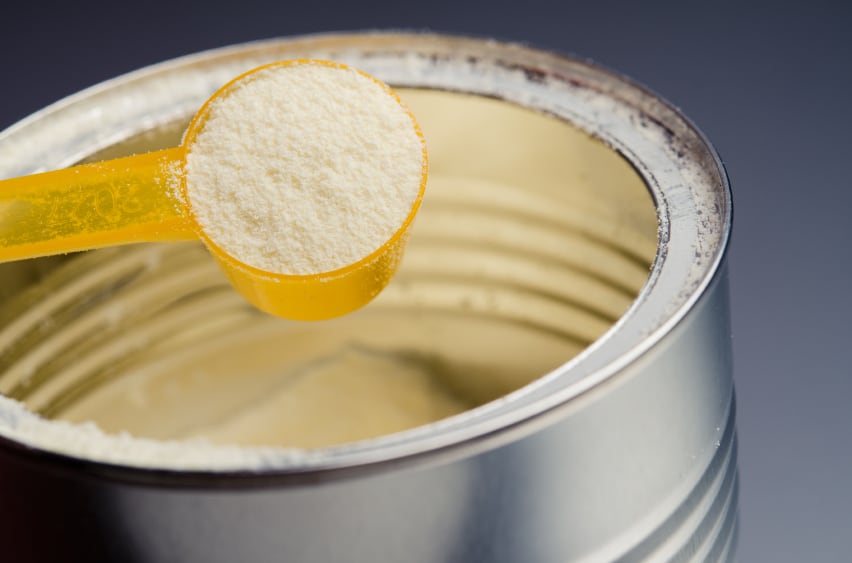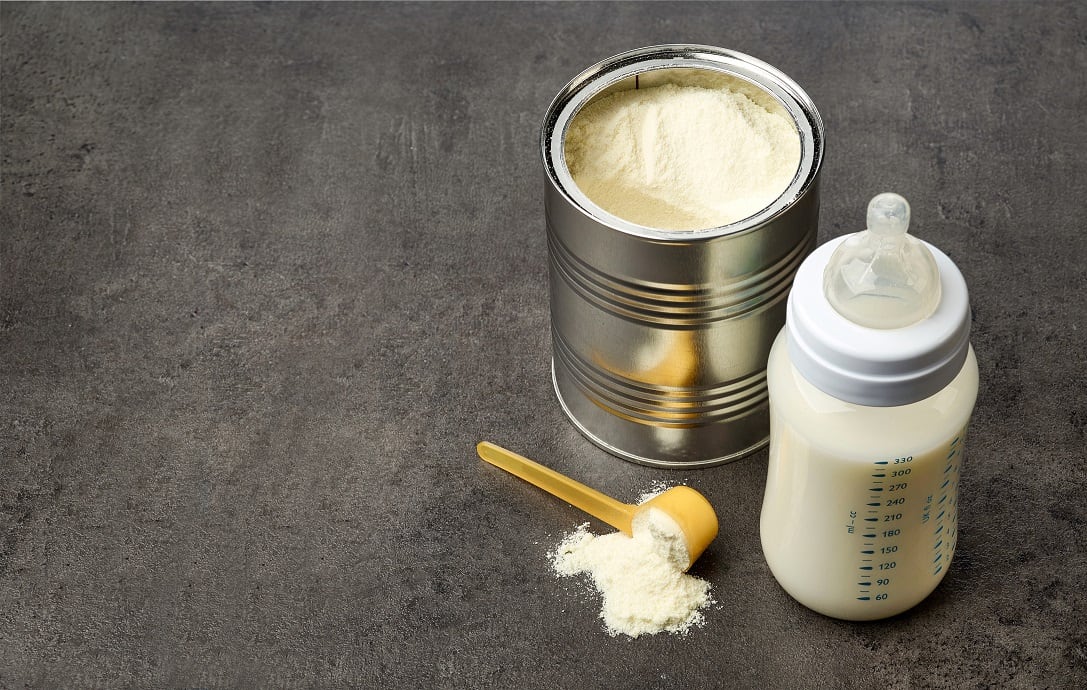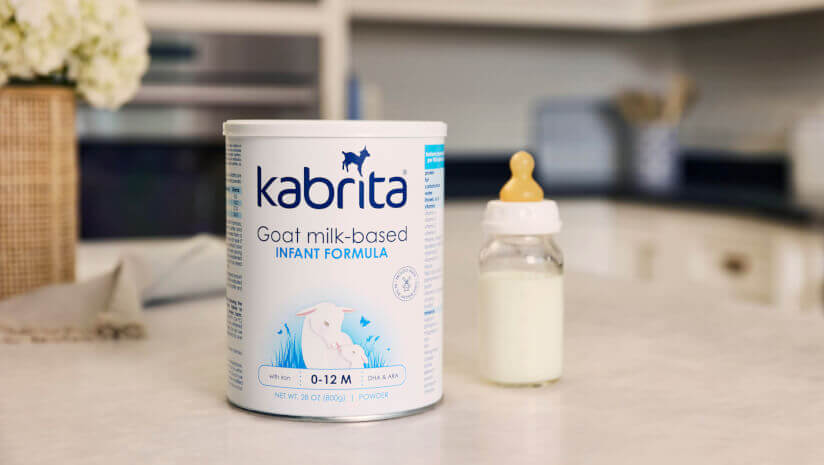As consumers continue to seek out ways to support their health goals, dairy foods associated with gut health benefits are increasing coming to the fore. In the US alone, sales of lactose-free milk, whole fat milk, cottage cheese and yogurt have increased in recent years thanks in large part to their health halo and benefits ranging from clean nutrition to high protein content.
A2 dairy – made from milk that contains only the A2 type of beta-casein protein (see sidebar for more information) – has been shown to alleviate digestive health symptoms such as bloating in consumers with self-reported dairy intolerance*.
So how does A2-type protein dairy fit into the health and wellness macro trend?
New Zealand’s The a2 Milk Company has been a prominent player in the field. The company markets infant milk formula, liquid milk, nutritionals and a mix of powdered and liquid products in markets including China, Australasia and North America.
In recent years, the company has been gaining momentum in the Chinese infant formula market while maintaining its position in the premium liquid milk segment across Asia, Oceania and North America.
We spoke to The a2 Milk Company’s Edith Bailey, chief marketing officer, and Dr Andrew Clarke, Chief Science Advisor, to find out how the category is shaping up.
A2-type dairy facts
- Cow’s milk contains two major groups of proteins, with casein comprising around 78% of total protein, and whey 22%
- Beta-casein (bCN) makes up around 30% of protein in milk ( roughly 2.5g per cup).
- There are at least 12 genetic variants of bCN that can be classed as either A1- or A2-type beta-casein based on their structure and subsequent digestion. A2 beta-casein is the original variant from which the others evolved. A1-type variants arose in European herds through natural genetic mutation around 5,000 years ago.
- A1-type beta-casein readily produces a protein fragment BCM-7 upon digestion, A2-type beta casein does not.
- In 2014, it was demonstrated that BCM-7 binding mammalian cells increased oxidative stress and triggered inflammation.
- The benefits of A2-type protein dairy stems from the avoidance of A1 beta casein induced inflammation.
- It is not the quantity or percentage of A2-type protein in the milk, it is the absence of A1 protein that matters.
Nutrition drives profits – but A2 milk is a pull for the health-conscious
While premium infant nutrition has been a major growth driver for The a2 Milk Company in H1 2025, liquid milk remains crucial for diversification and as a familiar format to build brand awareness through.
Globally, the A2 milk market also has strong growth potential – it was valued at approximately $1.5bn in 2024 and is expected to reach $3.5bn by 2033, growing at CAGR of about 10% from 2025 to 2033, according to Business Research Market Insights (A2 Milk Market Share & Trends, 2025-2033).
But who is seeking out A2-type protein dairy today? “Health-conscious individuals or people with dairy sensitivities tend to seek out A2-type protein dairy today,” says Edith Bailey, chief marketing officer. “The awareness of the A2-type protein dairy and its benefits differs by market, but has been increasing with the rise of the more health-conscious and the growing trend around digestive health as well as the increase in the number of players in this space spending marketing dollars.”
“Shoppers generally associate A2-type protein dairy with being easier on digestion and good for sensitive stomachs; premium, and natural.”
It’s no surprise then that it’s the company’s lactose-free milk product that’s seen a 11.2% rise in net sales across Australia and New Zealand, netting the company NZ$103.8m in H1 2025.
The firm has also carved out a larger share of Australia’s lactose-free market, growing steadily from 12.7% in H2 2024 to 15.8% in H1 2025. This growth has been supported by increased distribution and rising awareness.
And in the US, liquid milk net sales rose 13.4% to NZ$63.4m, the firm also increasing its premium milk market share to 2.4% from 2.2% in FY24.
Beyond milk: Challenging market dynamics
On formats, Bailey said the A2 dairy category started with liquid milk and the format continues to dominate. “Ranges were then expanded to powdered milk products into markets that needed longer shelf life,” she added.
“There has been some limited innovation into adjacent diary categories such as ice cream and yogurt, but category dynamics have made the uptake of these formats more challenging.”
Where the company has found significant success is in nutritionals and premium infant milk formula. “The entry into infant milk formulas, particularly in the China market, brought significant growth through a new user base,” said Bailey.
“More recently, we have seen the development of more functional value-added formats such as Kids, Adult and Senior fortified milk powders.”
Premium infant nutrition ‘critical to long-term growth’
In H1 2025, the company reported that its China-label IMF sales were the single largest contributor to total company revenue, growing 11.8% vs prior year to NZ$316.6m.
The a2 Milk Company also recorded the third‑fastest in market share growth according to Kantar largely thanks to its China-label IMF product, a2 Zhichu which captured 5.3% of the world’s largest infant milk formula (IMF) market.
The company’s premium positioning was key as it achieved growth despite the challenging macroeconomic backdrop in China’s IMF market.
In China and other Asian markets, segment revenue increased 10.7%, almost entirely driven by IMF, with both the company’s China and English-label brands gaining sales momentum.
Overall, infant formula is viewed as critical to the company’s long-term growth. The New Zealand firm’ strategy is to focus on premiumization in the segment, investment in product development around new China-label formulas, and bolstering marketing to reinforce the brand’s premium image.
What’s the latest science on A2 dairy?
As for what nutritionists think of A2-type dairy, their perceptions are similar to those of consumers, Bailey explained. “Nutritionists and other specialists believe and support the importance of dairy from a nutritional perspective, but have limited understanding of A2-type protein dairy specific benefits around digestion – specifically, in that it is not the presence of A2-type protein driving the benefit but rather the absence of A1 protein.”
Science on A2 type protein dairy is evolving, too, with research focused on expanding knowledge around less robustly-backed academic claims.
Dr Andrew Clarke, chief science advisor at the a2 Milk Company, told us that recent academic research has sought to investigate certain health claims currently associated with A2 type protein dairy, including digestive comfort and reduced inflammatory markers.
Three new studies expanded the demographic of those known to benefit from A1 protein-free milk, including breast-fed infants benefiting from mother’s consumption of A1 protein-free milk and older adults.
“These studies have provided results consistent with existing research but have also expanded our depth of understanding and evidence base,” said Clarke. “The outcomes of two of these new studies were showcased the 57th Annual Meeting of The European Society for Pediatric Gastroenterology Hepatology and Nutrition, a major pediatric conference.”
Two of the studies – which were sponsored by the a2 Milk Company – found that infant milk formula made from A1 protein-free milk contributed to infant gut comfort and reduced crying when compared with ordinary milk; and that breastfeeding mothers that consumed such milk experienced improved digestion, less fatigue and a better immune response. Meanwhile, their breast-fed infants also shared many of these benefits.
“The third study focused on the benefits to cognition and quality of life in older Chinese adults, and was recently published in The Journal of nutrition, health and aging,” Clarke added. “It demonstrated that consumption of A1 protein-free milk enhanced some of the benefits of ordinary milk across a range of cognitive measures relating to memory, learning error rate, and response time.”
So what’s next for the a2 Milk Company?
While increased birth rates in China offered relief to many players in the IMF industry, it’s premiumization and diversification into other nutritionals that holds the key to long-term growth.
For The a2 Milk Company, its quest to capture further market share gains in China IMF continues. Based on its latest investor update re H1 2025, the firm will target high-income consumers who demand premium products. And beyond infant nutrition, the company is looking to broaden its range of nutritionals with maternal, early life and adult nutrition products in China and other Asian markets.
Over in Australia and New Zealand, it’s about protecting category presence in liquid milk while working on product innovation; specifically, new packaging and functional dairy variants.
Elsewhere, the company is focusing on increasing production of premium IMF and nutritional powders at processing plant Mataura Valley Milk, which the company acquired in 2021 to boost manufacturing and supply chain resilience in China.
What are the major markets and the emerging markets for A2-type protein dairy globally?
1. China: given the high prevalence of lactose intolerance and dairy sensitivity.
2. USA: in line with the rising interest in digestive health
3. Europe
Emerging Markets:
Southeast Asia such as Vietnam, South Korea and India
Middle East: driven by the rising demand for premium healthy diary
Sources:
Based based on evidence from several randomized controlled trials, namely: Jianqin et al. (2016, Eur J Clin Nutr) and Brooke-Taylor et al. (2017, Nutr J)




